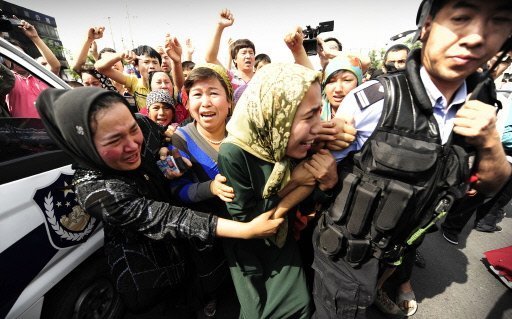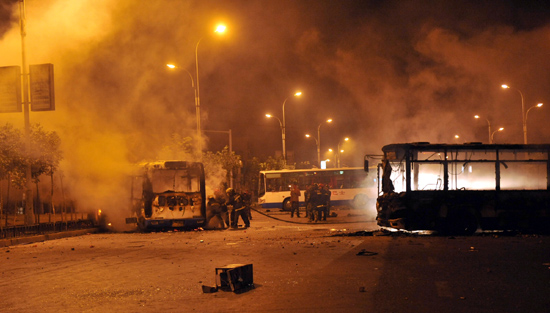07.07.2009
The riots that currently go on in Xinjiang are in a way quite similar with the riots in Tibet last year. They are partly linked with the Han colonization policy ked by Beijing in the region. However other causes explain the explosion of violence. Moreover this region is crucial for the Chinese authorities.
The Uyghur popultion has difficulties to bear the Chinese presence
56 different nationalities coexist in China. Uyghurs are one of them, and are mainly living in Xinjiang, a north-western region.
Uyghurs have a bad reputation in China. They are discriminated by the majority ethny as they are seen as criminals. Moreover, it seems that the riots are caused by this prejudice. Before the riots, violent fights opposed Han and Uyghur workers in Canton. Uyghurs were accused of rape in a factory, which led to the death of two persons.
Uyghurs are an ancient nation with a strong cultural identity : they speak Turkish and are muslims. This ethny is tehrefore radically different from the Chinese Han majority ethny. The assimilation policy led by Chinese authorities is therefore quite unpopular. Uyghurs fear to become a minority in their own country.
Moreover if the region is officially autonomous, Uyghurs only have a little influence on the decisions and all the responsabilities belong to Han people. This situation engenders frustration among young generations.
Xinjiang : A strategic area for Chinese officials
On the Chinese side, the region appears essential.
Xinjiang was like Tibet an experimental area for the assimilation policy. The authorities encouraged the Han population to move in. The Han population, strongly attached to China lock key adminitration posts, which limits the autonomy of the region.
Considering the local geopolitical aspects, this region is essential for Beijing, because of the borders with central Asia, Pakistan and India. The road of silk goes through the region and it is a gate for the entrance of energy from central Asia in China, like gas and oil, whose consumption rises in China.
Xnjiang is also rich in gas and oil. Therefore the region embodies a strategic area for Chinese officials as the energetic consumption of China booms.
Xinjiang is also a true symbol because of its name : New Fronteer. It embodies a CHinese Far West where everything needs to be conquered.
A war of pictures


Since the beginning of the riots, a true war has been implemented in medias between Uyghur bloggers and activists and the Chinese government, which acts through its press agency New China.
Since the Olympics in Beijing, a net was implemented by the authorities to prevent Chinese citizens from accessing controversial information. This net more or less tightened depnding on the period. For instance many blogs and activist websites were shut down during the anniversary of the Tian’anmen demonstrations.
This net was not immediately tightened after the first riots. Therefore non official images were released, images that Beijing didn’t want to see diffused.
If the Chinese authorities quickly insisted on the Han victims of this riots by showing videos of civils in blood or Uyghur demonstrators burning cars to lean the idea of a violent uprising against the national authority, which uses the prejudice against Uyghur people, the communcation strategy of Beijing was troubled on the international scene.
Thus thanks to cellphones, pictures of the repression against demonstrators and insisting on the pacifist approach of this movment allowed international medias to question the Chinese official speech defended by New China.
Beijing has actually insisted on the trrorist aspect of the organizations which claim for more autonomy in Eastern Turkistan since 9/11. This strategy is troubled today because of the critcs of the international community which interprate it more and ore as a will of Beijing to hush up revendications in peripheric regions.
By now China accuses the Commitee for Eastern Turkistan which is based in Astana, Kazakhstan of generating these destabilizing riots. The consequences of these riots are impressive : more than 160 deaths. The evolution of this movment in the following days might tell us if Xinjiang will be the new Tibet.
To conclude, you can watch the following videos : one from the Chinese official television (CCTV) and another from France 24:
Thomas PRADO for www.buddhachannel.tv




